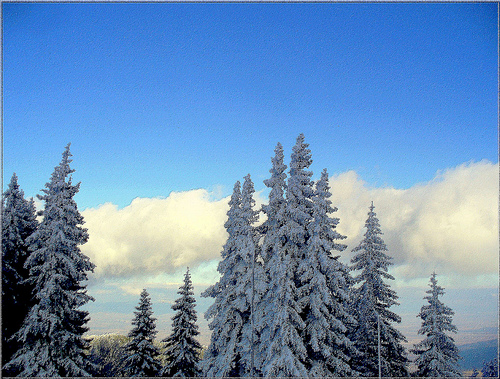The Humble Abode of Picea pungens
Blue spruce has adapted to cold and humid
climatic zones where most of the precipitation happe ns during the
summer. It is a native
species to central and southern Rocky Mountains in western North
America. It ranges from
central Colorado to southern New Mexico, southern and western
Wyoming, eastern Idaho, south to Utah, northern and eastern Arizona.
On a map the range would be approximately latitude 33° 50' to
48° 54' N. and from longitude 104° 45' to 114° 00' W.
ns during the
summer. It is a native
species to central and southern Rocky Mountains in western North
America. It ranges from
central Colorado to southern New Mexico, southern and western
Wyoming, eastern Idaho, south to Utah, northern and eastern Arizona.
On a map the range would be approximately latitude 33° 50' to
48° 54' N. and from longitude 104° 45' to 114° 00' W.
Blue spruce is commonly found at elevations
between 1,750 to 3,000 m.
It does not reach the alpine tree line, which is the highest
elevation that sustains trees, like the Engelmann spruce in the same
niche. Blue spruce is
common along stream banks and in mountain valleys where moisture
levels are high. It can
be cultivated in a wide variety of soils that are not too moist.

Although it grows best with an abundance of moisture, it can resist droughts better than any other spruce. It can handle temperatures ranging down to negative 40 degrees Fahrenheit and is more resistant to high isolation and frost damage than any other spruce.
Over its wide range blue spruce can be
associated with many organisms depending on location and elevation,
but most frequently it is associated with subalpine fir, white fir, and
Engelmann spruce. They
are all found in environments with a balanced supply of moisture and
the central Rocky Mountains.
Now that you know where it lives let us look in the fridge. Check out nutrition.